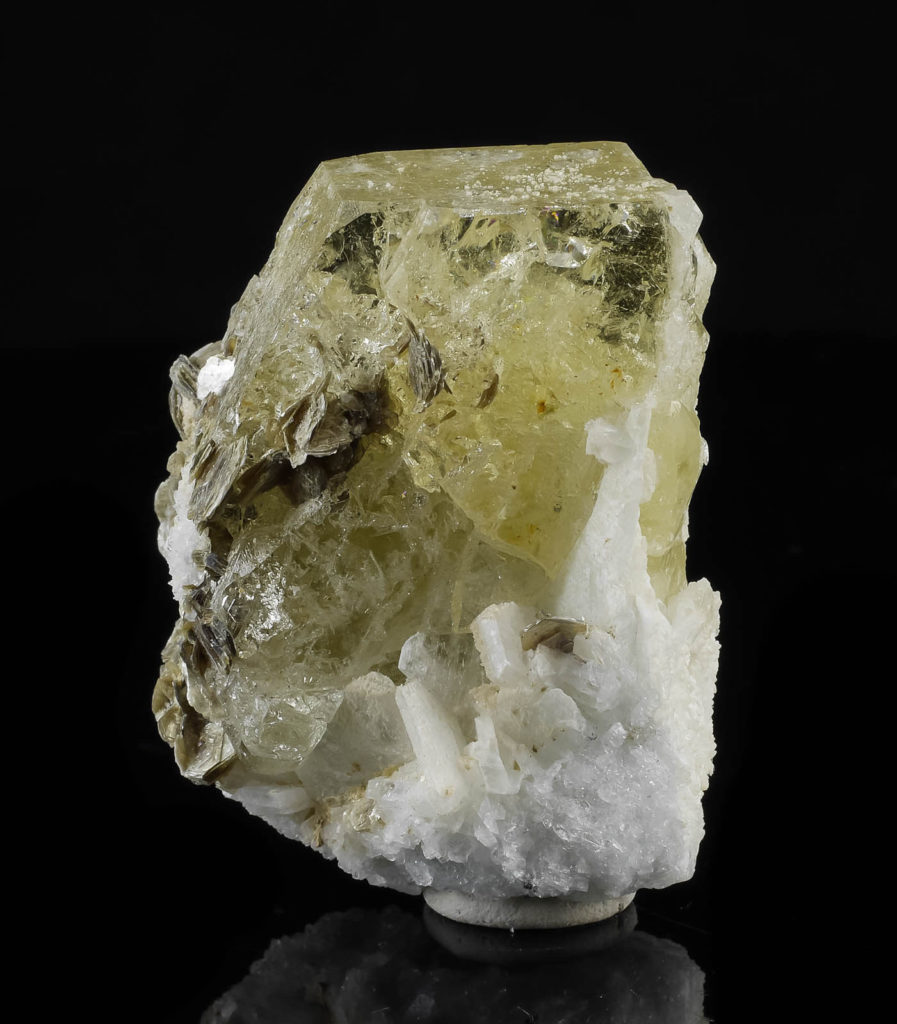Beryl has the chemical composition Be3Al2Si6O18- beryllium aluminum cyclosilicate. It is of the hexagonal crystal system and has both flattened pinacoidal or domed complex terminations with equal frequency. Beryl is composed of cavernous cyclosilicate rings supported by a scaffolding of AlO6 octahedra and BeO4 tetrahedra. The cavities inside of the cyclosilicate rings can complex ions, including large metal ions that impart coloration in beryl. Common chromophores or color influencing elements in beryl are iron, manganese, chromium, scandium, and cesium.
Beryl is a very hard and resilient mineral with nice luster, little cleavage, and diverse coloration. These factors are the reason why the many varieties of this mineral are very popular minerals to cut gemstones from or to use in carving and other lapidary arts. Beryl has been used in jewelry since antiquity for this reason. Beryl was first mined for its ornamental usage and did not see any industrial usage until thousands of years after its initial discovery.

Beryl has many close mineral relatives- the closest and most well known are pezzotaite- a very rare bright pink hexagonal mineral which is the cesium endmember of beryl and bazzite which is a deep blue relative of beryl that contains the rare element scandium in its structure. These two minerals are far scarcer than beryl itself but are important to mention due to pezzotaite’s value and usage in high end collector gems, and bazzite’s extremely unusual chemistry.
Beryl is the mineral in which the element beryllium was discovered. French chemist Louis-Nicolas Vauquelin discovered the element in beryl in 1798 after he boiled oxides from processed beryl in an additional alkali. Beryllium was also simultaneously discovered by two other scientists; Friedrich Wohler and Antoine Bussy, who reduced the metal from beryllium chloride with the addition of potassium metal. They were the first to extract the metallic element. Previous to Vauquelin’s discovery, beryl was thought to only be an aluminum silicate though many scientists noticed a peculiar mass difference between initial samples and the oxides that resulted from the analysis procedure of heating the samples in a furnace. Beryllium was originally referred to as “glucinium” by Vauquelin because its salts apparently have a sweet flavor. It is not advisable to ingest any water soluble salt of beryllium because it is an extremely toxic element. The beryllium in beryl is so insoluble though that it is nontoxic. Beryllium is used as an alloying metal to add strength and corrosion resistance to copper and other metals, as an x-ray transparent material, and in the nuclear industry to produce neutrons.
